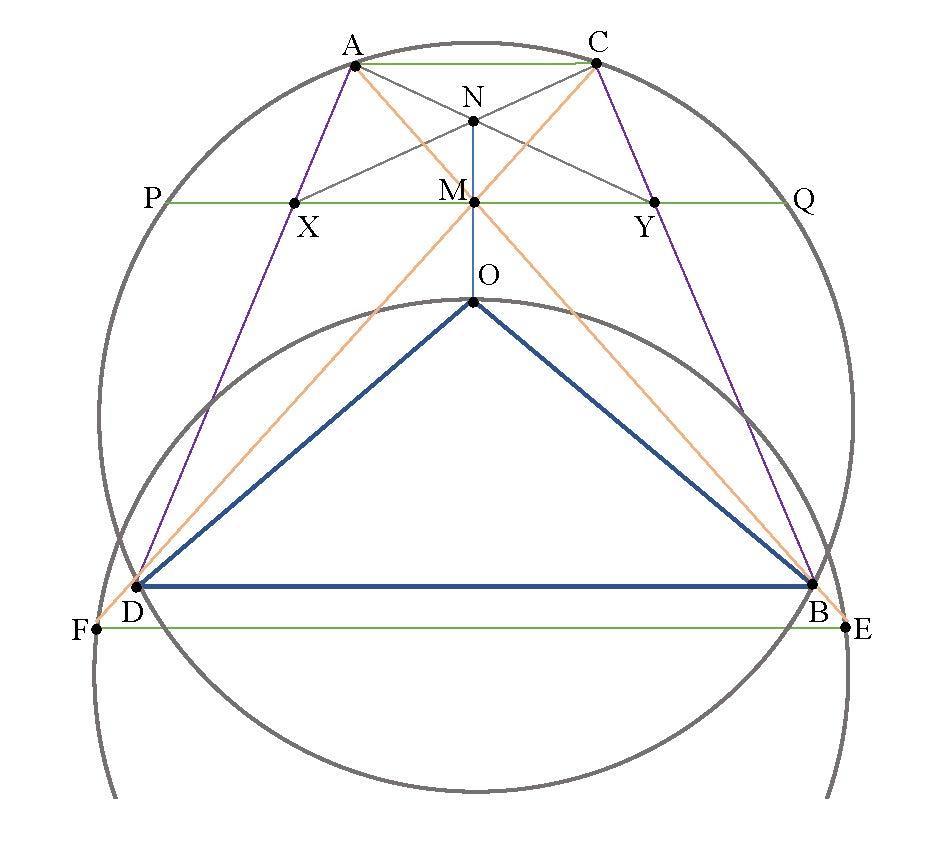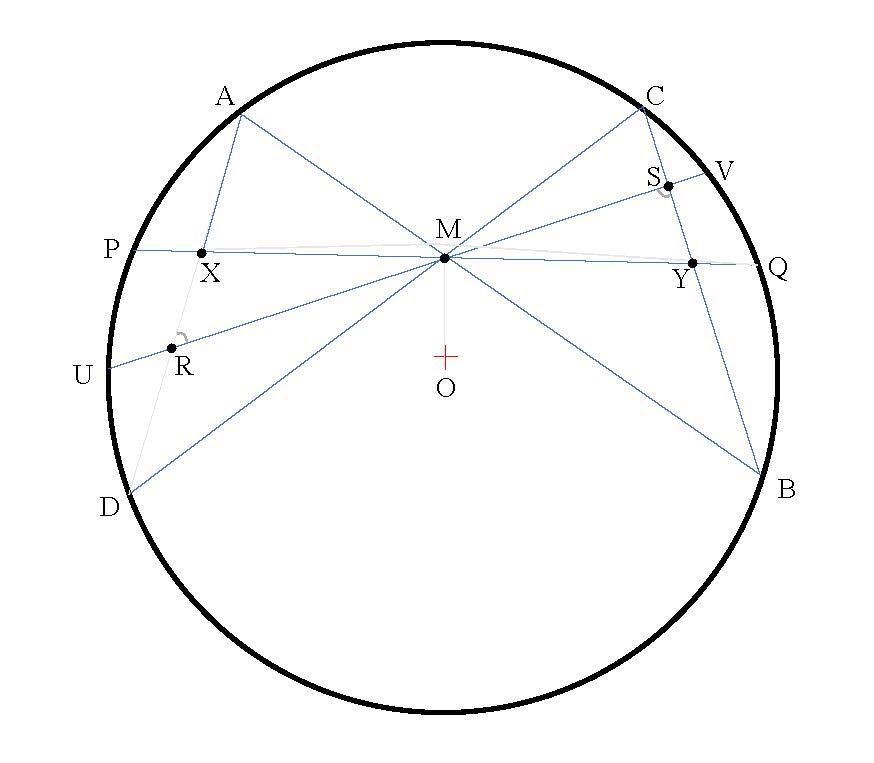Ion Patrascu, Florentin Smarandache, The Reciprocal of Butterfly Theorem, Octogon Mathematical Magazine, Vol. 30, No. 2, pages 966-970, October 2022.
The Reciprocal of The Butterfly Theorem
Ion Pătrașcu
“Frații Buzești” National College, Craiova, Romania
Florentin Smarandache, PhD, PostDoc University of New Mexico, Gallup Campus, NM 87301, SUA
In this paper, we present two proofs of the reciprocal butterfly theorem.
The statement of the butterfly theorem is: Let us consider a chord PQ of midpoint M in the circle Ω(O). Through M, two other chords AB and CD are drawn, such that A and C are on the same side of PQ. We denote by X and U the intersection of AD respectively CB with PQ. Consequently, XM = YM.
For the proof of this theorem, see [1].
The reciprocal of the butterfly theorem has the following statement: In the circle Ω(O), let us consider the chords PQ, AB and CD which are concurrent in the point M≠O, such as the points A and C are on the same side of the line PQ. Let X and Y respectively be the intersections of the chord PQ with AD and BC respectively. If XM = YM, then M is the middle of the chord PQ
We construct the circumscribed circle of the isosceles triangle BOD and denote by E and F the points where AB and CD cut again the circle (see Fig. 1).

The quadrilateral DBEF being inscribed, we have that ∢CDB ≡∢BEF But ∢CDB ≡
∢BAC, therefore we obtain that ∢BAC ≡∢BEF, with the consequence AC∥EF (1).
Wedenoteby N thesecondpointofintersectionofthecircumscribedcircles ofthetriangles
AXM and CYM
The quadrilaterals AXMN and CYMN being inscribed, we have that ∢XAM ≡∢XNM and
∢YCM ≡∢YNM. Because ∢XAM ≡∢YCM (ADBC being an inscribed quadrilateral), previous relations lead to ∢XNM ≡∢YNM. This relation, along with the condition from the hypothesis
XM=YM, shows that, in the triangle NXY, NM is both median and bisector, therefore this triangle is isosceles, and NM⊥XY. (2)
Figure 1
The relation (2) implies m(������ ̂ )=900 and m(������ ̂ )=900 But m(������ ̂ )= m(������ ̂ )+ m(������ ̂ ) =900 .
On the other hand, m(������ ̂ )+ m(������ ̂ ) =900 , because m(������ ̂ )=1 2m(������ ̂ ).
We also have that m(������ ̂ )=m(������ ̂ ), because the quadrilateral FDOB is inscribed.
These relations lead to ∢NCM≡∢OFD, which further implies NC∥OF (3).
Analogously it is shown that NA∥OE (4).
Relations (1), (3) and (4) show that the triangles NAC and OEF have respectively parallel sides, therefore they are homothetic, the center of homothety being the point {M}=CF∩AE.
Then the homothetic points N and O are collinear with M, having NM⊥PQ, it follows as well that OM⊥PQ, consequently M is the middle of the chord PQ.
The relation (2) implies m(������ ̂ )=900 and m(������ ̂ )=900 .
But m(������ ̂ )=m(������ ̂ )+m(������ ̂ )=900 .
On the other hand, m(������ ̂ )+m(������ ̂ )=900 , because m(������ ̂ )= 1 2 m(������ ̂ ).
Proof 2.
Assuming the opposite, PM≠QM, therefore OM is not perpendicular on PQ.
We construct the perpendicular in M on OM and denote by U and V its intersections with the circle Ω(O)
We denote by R and S the intersections of the chord UV with AD and CB respectively (see Fig 2).

Because M is the middle of the chord UV, applying the butterfly theorem, we have that MR=MS.
We obtain that ∆MXR≡∆MYS (side-angle-side), and consequently ∢XRM≡∢YSM, therefore AD∥BC.
The condition AD∥BC leads to two possibilities for the quadrilateral ADBC. This can be an isosceles trapezoid if AD≠BC, or rectangle if AD=BC
We eliminate the possibility ADBC - rectangle, because this rectangle would have the center M and it should be that M=O.
Let us consider ADBC -isoscelestrapezoid with AD thesmall base.Inthis case,weobserve that M - the intersection of the diagonals of the trapezoid, and O are on the axis of symmetry of the trapezoid, and UV⊥OM contradicts the fact that the points A and C must be on the same side of the right UV.
The contradictions show that M must be the middle of the chord PQ.
Bibliography
[1] Nguyen Tien Dung. Three Syntetic Proofs of the Butterfly Theory. Forum Geometricorum, vol. 17 (2017), 355-358.
[2] Florentin Smarandache, Ion Pătrașcu. The Geometry of Homological Triangles. The Educational Publisher, Columbus – USA, 2012.
